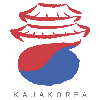How to say Hello in Korean
Hello!
This is usually the very first word you learn in a new language. But in Korean, there are several ways to say it depending on whom you're speaking to. Indeed, in Korean, there are different speech levels, and you don’t speak the same way to everyone. To better understand this phenomenon, you can read our article on levels of politeness in Korean.
If you'd like to learn how to say "hello" in Korean, you're in the right place! We invite you to read this article so you won’t make any mistakes on your next trip to Korea.
안녕하세요 - Annyeonghaseyo
An-nyeong-ha-se-yo is certainly the most well-known way to say hello in Korean, and rightly so, as it is by far the most commonly used greeting in daily life. Annyeonghaseyo is a polite, non-formal expression that includes an honorific suffix to show respect to the person you’re addressing.
Therefore, it’s perfect in most situations: with shopkeepers, servers, people you meet but don’t have to show extreme respect to, and also with older friends.
However, annyeonghaseyo doesn’t actually mean “hello.” In reality, 안녕하세요 is actually a question! “안녕하세요?” could be translated as “Are you at peace?”
So, it’s possible for someone to simply answer 네 (ne), meaning “yes.” But of course, you can also reply with “안녕하세요,” since it has become a standard polite greeting with no real questioning intention anymore.
When you say annyeonghaseyo, you should slightly bow your upper body towards the person. Don’t shake hands or give a cheek kiss to a Korean!
안녕 - Annyeong
An-nyeong is a shortened, casual version of the previous greeting. It can only be used with close friends who are younger or the same age as you.
When you're with close friends, there’s no need to bow. A simple hand wave is enough.
안녕하십니까? - Annyeonghashimnikka
An-nyeong-ha-shim-ni-kka is, on the contrary, the very formal version of annyeonghaseyo. It’s unlikely you’ll need to use it when traveling in Korea, as this form is used in contexts requiring a high level of respect.
You’ll hear this in news broadcasts, formal speeches, or maybe in the military.
It’s super polite and not something you’d use in everyday conversations.
여보세요? - Yeoboseyo
In Korean, we say Yeo-bo-se-yo when we pick up a call.
It’s kind of like saying “hello?” in English when you’re answering the phone.
If you’ve watched K-dramas, you’ve probably heard it a bunch of times.
좋은 아침 - Joeun achim
Jo-eun a-chim is a somewhat special expression, as it actually comes from the English “good morning” and was adapted into Korean. Literally, 좋은 means “good” and 아침 means “morning.”
Its use varies depending on the level of politeness required:
- Casual: 좋은 아침 - joeun achim
- Polite: 좋은 아침이에요 - joeun achimieyo
- Formal: 좋은 아침입니다 - joeun achimimnida
Today, 좋은 아침이에요 has become a fairly common expression, but it is still used far less than the classic 안녕하세요, which you can use in all situations.
Alright, that’s it for today, I hope you enjoyed this article!
Download this article in PDF format
This printable eBook teaches you Korean writing and includes more than 1,000 Korean vocabulary words divided into 40 categories. Each word comes with audio pronunciation recorded by native Korean speakers (no AI)!
On top of that, you’ll also get access to an online vocabulary learning tool based on the scientifically proven Leitner spaced repetition method.
Learn more

